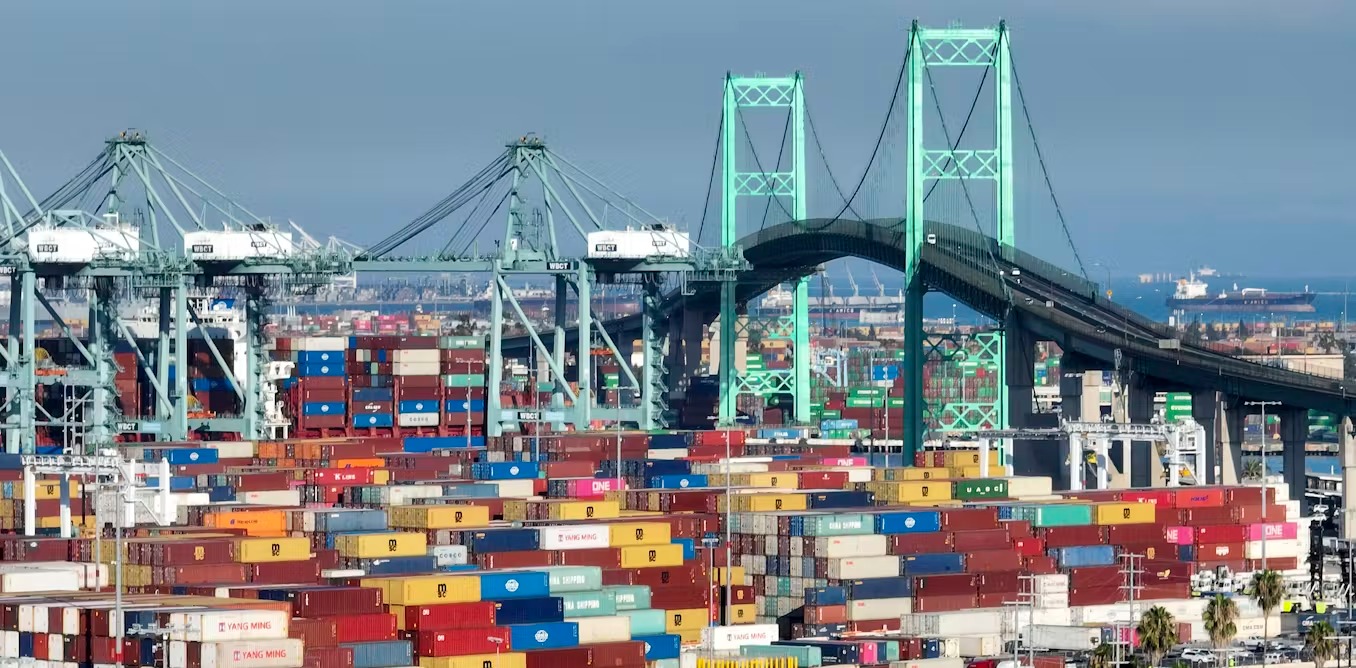U.S. customs agents began enforcing President Donald Trump’s 10% baseline tariff on imports from multiple countries on Saturday, marking a major shift from post-WWII trade norms. This unilateral move affects goods arriving at U.S. ports, airports, and customs warehouses as of 12:01 a.m. ET. A second round of tariffs, ranging from 11% to 50%, is set to begin Wednesday, targeting 57 key trading partners. Chinese imports will face a 34% hike, bringing total U.S. tariffs on China to 54%, while EU goods will be hit with a 20% tariff.
Despite trade deficits with the U.S., countries like the UK, Brazil, Australia, and Saudi Arabia are among those initially affected. Trump’s administration argues that these countries would show larger deficits if trade terms were more balanced. A 51-day grace period applies to cargo already en route, expiring May 27.
The announcement triggered a global market sell-off, wiping out $5 trillion from the S&P 500, crashing oil and commodity prices, and pushing investors toward U.S. bonds. In response, China imposed matching 34% tariffs on U.S. goods and restricted rare earth exports. Trump hailed the move as “an economic revolution.”
Global leaders expressed concern. French President Emmanuel Macron called for unity, while the UK and Israel sought exemptions or trade deals. Japan, Taiwan, and Vietnam are in talks with the U.S. to mitigate the impact. Italy warned against retaliatory tariffs, and Elon Musk voiced hope for tariff-free U.S.-EU trade.
Though Canada and Mexico are exempt from the new tariffs, they face separate 25% duties for goods not meeting North American trade agreement rules. Over 1,000 critical items, including pharmaceuticals and semiconductors, are currently excluded, but new duties remain under consideration.



 [Editorial Cartoon] “Tariff Chicken Game” – U.S. and China Speed Toward Economic Catastrophe
[Editorial Cartoon] “Tariff Chicken Game” – U.S. and China Speed Toward Economic Catastrophe  Pam Bondi to Lead DOJ Initiative Defending Second Amendment Rights
Pam Bondi to Lead DOJ Initiative Defending Second Amendment Rights  South Korea Unveils $10B Auto Support Plan Amid U.S. Tariff Threat
South Korea Unveils $10B Auto Support Plan Amid U.S. Tariff Threat  Costco Engages with Iowa AG Over DEI Policies Amid Conservative Scrutiny
Costco Engages with Iowa AG Over DEI Policies Amid Conservative Scrutiny  French Minister Urges Companies to Pause US Investments Amid Tariff Tensions
French Minister Urges Companies to Pause US Investments Amid Tariff Tensions  China Backs Stock Market with Central Huijin Investment Support
China Backs Stock Market with Central Huijin Investment Support  Ken Paxton to Challenge Sen. John Cornyn in 2026 Texas GOP Primary
Ken Paxton to Challenge Sen. John Cornyn in 2026 Texas GOP Primary  DOJ Repeals Biden-Era Gun Dealer Policy Amid Controversy
DOJ Repeals Biden-Era Gun Dealer Policy Amid Controversy  Japan’s Akazawa Tipped as U.S. Trade Negotiator Amid Currency and Tariff Talks
Japan’s Akazawa Tipped as U.S. Trade Negotiator Amid Currency and Tariff Talks  IRS Chief to Resign Amid Controversial Tax Data Sharing Deal with Homeland Security
IRS Chief to Resign Amid Controversial Tax Data Sharing Deal with Homeland Security  U.S. and India Discuss Trade Tariffs Amid Ongoing Bilateral Deal Talks
U.S. and India Discuss Trade Tariffs Amid Ongoing Bilateral Deal Talks  Vice Admiral Chatfield Fired Amid Trump’s Pentagon Shake-Up
Vice Admiral Chatfield Fired Amid Trump’s Pentagon Shake-Up  RBNZ Poised to Cut Rates Amid US Tariffs and Global Slowdown Fears
RBNZ Poised to Cut Rates Amid US Tariffs and Global Slowdown Fears  BOJ’s Ueda Cautious on Rate Hikes Amid U.S. Tariff Uncertainty
BOJ’s Ueda Cautious on Rate Hikes Amid U.S. Tariff Uncertainty  China’s Teapot Refiners See Modest Recovery Amid Sanctions and Weak Fuel Demand
China’s Teapot Refiners See Modest Recovery Amid Sanctions and Weak Fuel Demand  Nikkei Soars 6.5% as Wall Street Recovery Spurs Market Rebound
Nikkei Soars 6.5% as Wall Street Recovery Spurs Market Rebound 
































HERE You Registered________ http://Www.WorksProfit7.Com/